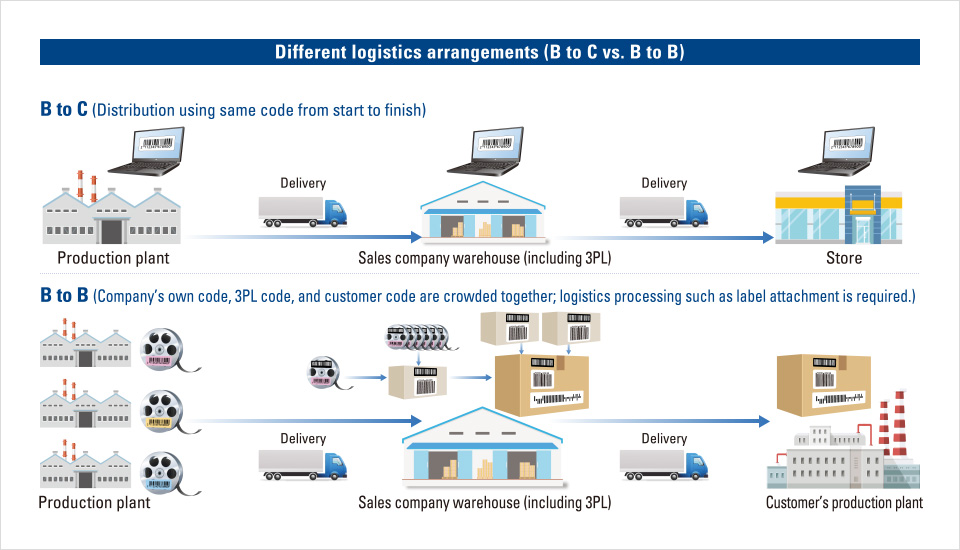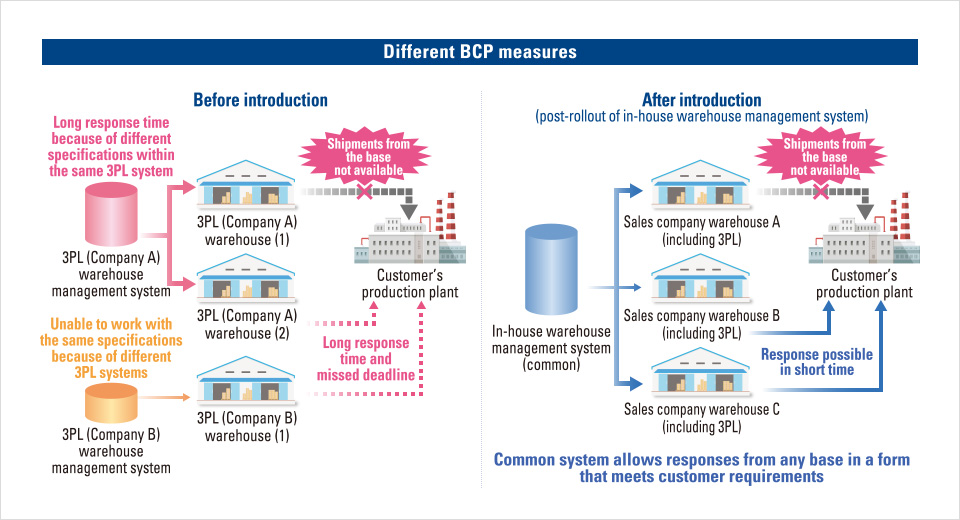Special Feature: Logistics Reform Brings Competitive Advantages

Black-boxing harms logistics
Since the collapse of the bubble economy in the early 1990s, many companies have concentrated management resources on their core operations and reviewed value chain to cut costs. In doing so, core operations in the manufacturing industry were procurement, development and production processes that are directly related to manufacturing. Logistics operations were considered as non-core, and a trend of outsourcing logistics to specialized 3PL (third-party logistics) providers became evident. The electronic components industry was no exception.
As a result, the operations outsourced to 3PL providers have become black-boxed. Manufacturers do not accumulate knowhow on validating logistics processes and even their ability to evaluate the quality of logistics is declining. In the electronics industry, meanwhile, manufacturers are required to provide more sophisticated logistics handling, such as JIT (Just In Time) and VMI (Vendor-Managed Inventory), in order to supply customers with the items they need, when they need, in the amounts they need, according to customer demand fluctuations.
Furthermore, in contrast to B to C transactions, logistics for electronic components in general cannot be centrally managed from inventory through to receiving and placing orders using a uniform code such as a JAN code (EAN code) attached at the time of shipment from a company’s own plant. This is because various logistics processes are necessary depending on the demands of the individual customer (see chart below). For example, logistics processes such as attaching labels as specified by the customer are performed at the warehouse that receives the products from the production plant. These logistics processes made warehouse operations more complex and required more man-hours, causing issues in terms of both quality and cost.

In-house system controls logistics quality
In order to resolve these problems associated with outsourced logistics operations, we began with understanding the entire logistics process, from shipment out of the production plant, to warehouse operations, and finally to delivery of the product to the customer. After sorting out the flow of the process, we began developing an in-house system to conduct the warehouse management that had been outsourced to 3PL providers and started introducing the system in 2014, with only warehouse space and warehouse operations provided by 3PL companies.
The in-house warehouse management system developed by TAIYO YUDEN enables integrated management from production to sales based on an ID printed on a barcode label that is attached at the upstream production plant. This system is optimally suited to the Group, as it leverages the TAIYO YUDEN Group’s value chain in which the process from production to sales is handled in-house.
Specifically, the ID is attached to each level of packaging: the individual reel (the smallest packaging format for components), the inner box containing a reel, and the outer box containing the inner boxes. This allows the system to get detailed information about the product inside the outer box without opening it but rather by reading the ID attached to the outer box with a barcode reader at the warehouse. As a result, the system can distinguish whether or not logistics processing is required at the shipment stage, and items that can be shipped in the outer box or inner-box units are shipped in such ways, thus achieving improvements in work efficiency. Furthermore, the system gives operational instructions for items requiring work at the reel-unit level, thereby eliminating mistakes by workers and enabling us to ensure the quality of our logistics.
![Advantages of in-house system
Creating optimal logistics system, making improvements→
Visualizing and displaying logistics function through in-house system→
Acquiring and accumulating logistics knowhow→
Re-assessing logistics function→
Expansion of in-house warehouse management system
[Introduction completed]KOREA,HONG KONG,SINGAPORE.[Introduction planned]JAPAN,SHANGHAI,TAIWAN,U.S.A.](images/img-sf02.jpg)
In-house system improves logistics quality, reduces cost and enhances BCP system
There are three main advantages to introducing this in-house warehouse management system: 1) improvement of logistics quality, 2) cost reductions, and 3) BCP measures.
With regard to improvement of logistics quality, one benefit is that by switching to a mechanism in which the system reads information and makes decisions based on barcode management using IDs as described above, the need for human judgment or visual checks when attaching labels or at other work stages is removed, and human error is therefore eliminated. In addition, by standardizing the warehouse management systems and warehouse operations that had previously been administered according to the separate specifications of each warehouse, it has become possible to extend improvements made at one base to all bases. As for operational costs, since it has become possible to process products as they are, without opening the outer or inner box, operational efficiency has increased remarkably, and costs have been reduced significantly when compared to the previous 3PL outsourcing costs. Moreover, since we had previously outsourced warehouse operations including the warehouse management system to 3PL companies, the choice of providers was limited, but now that we can offer providers our in-house warehouse management system, we can invite a wide range of companies into the bidding process. As a result, the principle of competition comes into play, and we can select the outsourcer that best suits the Company in terms of both quality and cost.
With respect to BCP measures, if an unforeseen situation arises at one logistics base, we can use another base to respond swiftly, because we operate a common system throughout the company. Introduction of the in-house warehouse management system thus has tremendous advantages, particularly in terms of improving our service to customers. We intend to actively expand the system at TAIYO YUDEN Group with the aim of improving our competitiveness. The system has already been introduced at sales bases in Korea, Singapore, and Hong Kong. We are moving ahead with a plan to expand it to all seven target bases within three years.

This website contains forward-looking statements. These forward-looking statements are not guarantees of future performance, and they involve inherent risks and uncertainties.
A variety of factors including changes in the business environment could cause actual results to differ materially from those in the forward-looking statements.